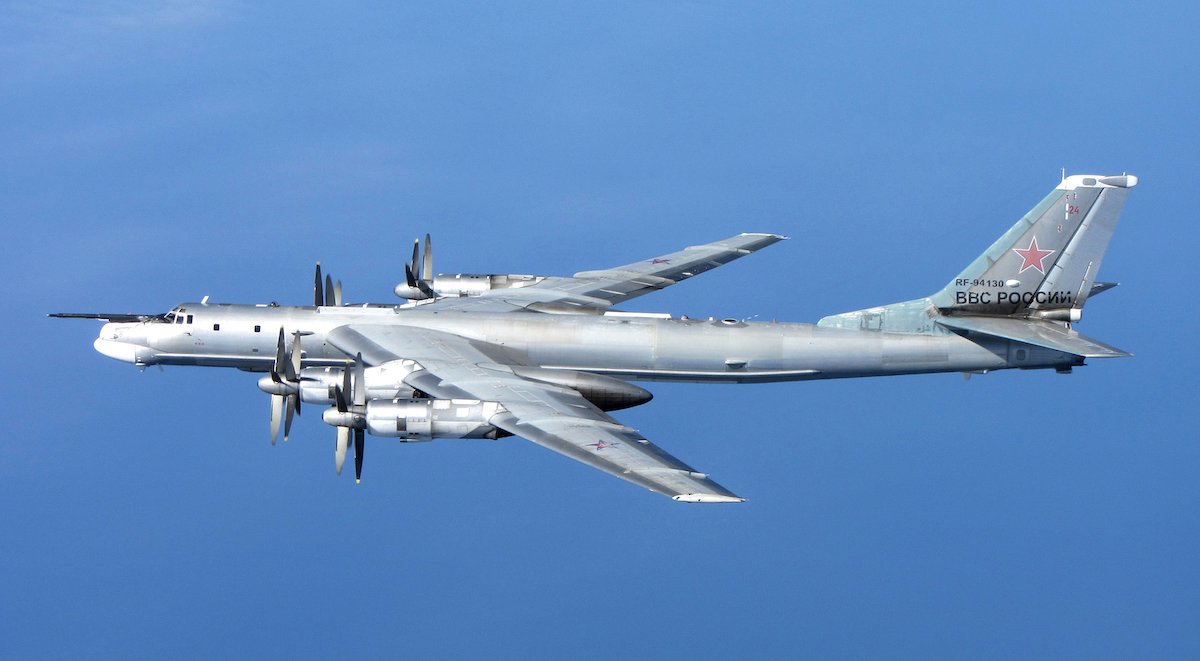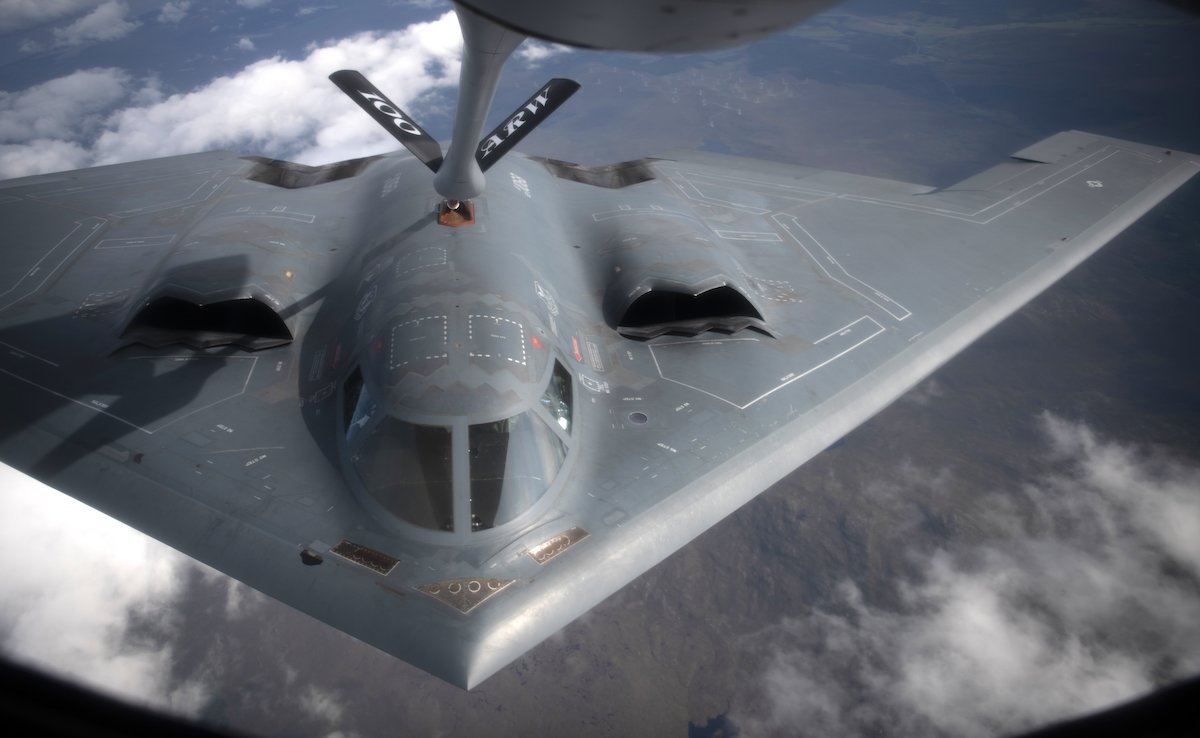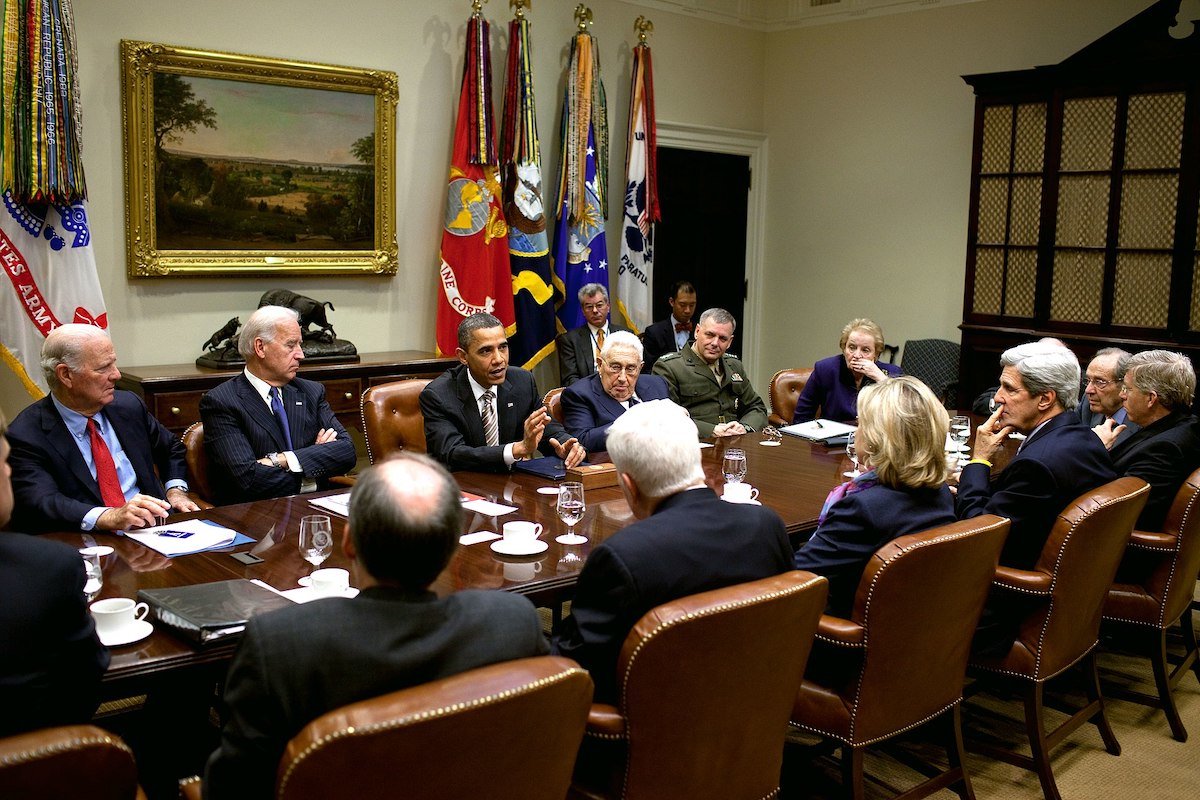Fallout Over Russia’s Invasion of Ukraine Threatens Key Nuclear Treaty

A Russian Topol-M ICBM on a mobile launcher during rehearsals for the 2012 Moscow Victory Day parade. Photo by Vitaliy Kuzmin via Wikimedia Commons.
KYIV, Ukraine — A bilateral meeting about the last remaining nuclear arms limitation treaty between Russia and the US is on hold, underscoring another way in which Russia’s full-scale invasion of Ukraine has upheaved the post-Cold War status quo.
The New START treaty limits both countries to 1,550 deployed nuclear warheads and 700 deployed ballistic missiles and heavy bombers. With New START set to expire in 2026, President Joe Biden said he wants to negotiate the pact’s extension.
The New START Bilateral Consultative Commission, comprising representatives from the US and Russia, was scheduled to take place in Cairo from Nov. 29 to Dec. 6. Two days before the talks were due to begin, Russian officials unilaterally withdrew.

A Russian Tu-95 Bear "H" photographed from a RAF Typhoon Quick Reaction Alert aircraft with 6 Squadron from RAF Leuchars in Scotland on April 23, 2014. Photo by Royal Air Force via Wikimedia Commons.
At first, Russia’s Foreign Ministry said it had simply postponed the meeting. Days later, however, Russian Foreign Ministry spokeswoman Maria Zakharova tied the decision to Washington’s support for Ukraine, casting doubt on whether the meeting would happen at all, as long as US military aid to Ukraine continued.
“In all areas, we note the highest level of toxicity and hostility from Washington. As part of the all-out hybrid war unleashed against us, almost every step the United States takes with regard to Russia indicates a pathological desire to harm our country wherever possible,” Zakharova wrote on Telegram.
Washington, for its part, wants to continue New START talks without preconditions. The current impasse poses a new obstacle for the treaty, which has already seen years of setbacks.
The two sides have not conducted regular inspections in some three years. The COVID-19 pandemic first interfered with the regular inspection schedule. Then, nearly six months into its invasion of Ukraine, Moscow announced on Aug. 8 that it was barring US inspectors from Russia’s nuclear weapons sites.

A US Air Force B-2 Spirit assigned to the 509th Bomb Wing, Whiteman Air Force Base, Missouri, is refueled by a KC-135 Stratotanker assigned to the 351st Aerial Refueling Squadron, RAF Mildenhall, during the Bomber Task Force training exercise over England, Aug. 29, 2019. US Air Force photo by Tech. Sgt. Emerson Nuñez.
Before the full-scale war in Ukraine, Moscow and Washington were already at loggerheads over several key issues during New START’s renewal negotiations. In particular, US negotiators argued the pact should include limitations on Russia’s arsenal of novel, nuclear-capable weapons systems — including a nuclear-powered underwater drone, as well as a nuclear-powered cruise missile.
Although Russia’s conventional forces have underperformed in Ukraine, Moscow still commands the world’s largest overall nuclear arsenal — a fact the Kremlin often leverages in coercive gambits to dissuade Ukraine’s military backers.
The original START treaty was signed in 1991, just six months before the Soviet Union dissolved. Signed by former Presidents Barack Obama and Dmitry Medvedev in 2010, the New START treaty went into effect in February 2011 and was last renewed in February 2021. Washington and Moscow agreed on a five-year extension until Feb. 4, 2026.
The last bilateral New START meeting happened in October 2021. Many experts argue that the absence of face-to-face meetings, as well as the inspection process breakdown, has exacerbated a climate of mistrust, which could lead to dangerous miscalculations by both sides.
According to the US State Department’s website: “Without the New START Treaty’s verification measures, there would be a decrease in U.S. knowledge of Russian nuclear forces. Over time we would have less confidence in our assessments of Russian forces and would have less information upon which to base decisions about U.S. nuclear forces.”

President Barack Obama attends a START Treaty meeting in the Roosevelt Room of the White House, Nov. 18, 2010. Official White House photo by Pete Souza.
In a November editorial, the Arms Control Association reported: “As Russian President Vladimir Putin doubles down on his disastrous decision to invade Ukraine and issues dangerous threats to use nuclear weapons, the risk of nuclear war is probably higher than at any point since 1962.”
In recent years, Russia modified some tenets of its nuclear warfare doctrine, allowing the use of nuclear weapons against non-nuclear attacks that “threaten the existence” of Russia or its nuclear forces. According to the Pentagon’s 2018 Nuclear Posture Review, Russia “mistakenly assesses that the threat of nuclear escalation or actual first use of nuclear weapons would serve to ‘de-escalate’ a conflict on terms favorable to Russia.”
During a televised meeting on Dec. 7, Putin responded to a question about whether Russia would consider a nuclear first strike. He responded, “If it doesn’t use it first under any circumstances, it means that it won’t be the second to use it either, because the possibility of using it in case of a nuclear strike on our territory will be sharply limited.”
Speaking about the same topic on Dec. 9, Putin said, “When the early warning system receives a signal about a missile attack, we launch hundreds of missiles that are impossible to stop.”
Read Next: Embedded With US Air Force Nuclear Missile and Bomber Units

BRCC and Bad Moon Print Press team up for an exclusive, limited-edition T-shirt design!
BRCC partners with Team Room Design for an exclusive T-shirt release!
Thirty Seconds Out has partnered with BRCC for an exclusive shirt design invoking the God of Winter.
Lucas O'Hara of Grizzly Forge has teamed up with BRCC for a badass, exclusive Shirt Club T-shirt design featuring his most popular knife and tiomahawk.
Coffee or Die sits down with one of the graphic designers behind Black Rifle Coffee's signature look and vibe.
Biden will award the Medal of Honor to a Vietnam War Army helicopter pilot who risked his life to save a reconnaissance team from almost certain death.
Ever wonder how much Jack Mandaville would f*ck sh*t up if he went back in time? The American Revolution didn't even see him coming.
A nearly 200-year-old West Point time capsule that at first appeared to yield little more than dust contains hidden treasure, the US Military Academy said.












